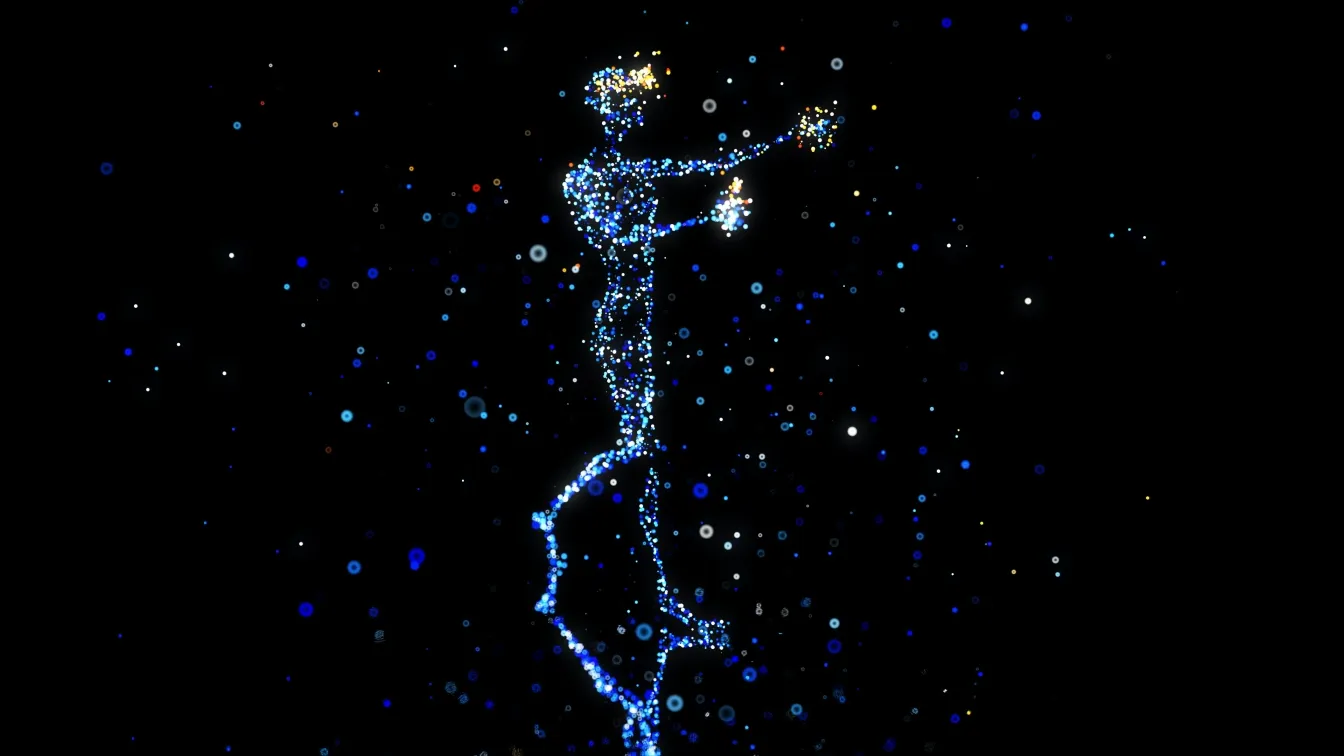
Reading time: 10 minutes
Virtual Influencers: The Next Big Trend in Influencer Marketing
Some of the hottest social media influencers on the web right now don’t sleep. In fact, they don’t eat either. Or breathe. Or even have a heartbeat. That’s because these social media stars are 100% computer generated. They are virtual influencers.
Table of Contents:
- What Are Virtual Influencers?
- Different types of Virtual Influencers
- Is Working With Virtual Influencers Right For Your Brand?
- What Are The Pros and Cons of Working with Virtual Influencers?
- What To Think About Before Working With Virtual Influencers?
- Always Analyze The Audience
Virtual influencers may sound like an episode of the science fiction series “Black Mirror”, but this futuristic concept is now a reality. These CGI characters have become one of the biggest trends in online marketing and they are a very real force to be reckoned with in the industry. What are these robot influencers all about? Could they be the right fit for your brand? Let’s take a closer look at virtual influencers, how they work, and what to consider before working with one.
What Are Virtual Influencers?
Virtual Influencers, also known as CGI influencers, are fictional computer-generated characters with a social media following. Behind each of these characters are their creators, who often remain anonymous. The persona and the image of the virtual influencer are created using the software. When a virtual influencer is developed, they are given a personality and a first-person view of the world. Like any fictional character, they rarely break the fourth wall and venture beyond their own storyline. Since the character is fully immersed in their life, this allows them to create a suspension of disbelief for their fans.
Although you might think that virtual influencers are a recent phenomenon, they have been around for years. For example, Hatsune Miku is a virtual musician created in Japan in 2007. She has released multiple albums and has been featured in ad campaigns for several brands. In fact, the idea of creating virtual personas was even around before it was technologically possible! Max Headroom is a British fictional AI character introduced in early 1985. He was portrayed as the “first computer-generated TV personality.”
However, he wasn’t CGI at all. He was played by actor Matt Frewer in prosthetic make-up and harsh lighting, in front of a blue screen. Computer technology wasn’t advanced enough in the 1980s to achieve a full-motion computer-generated character.

Different types of virtual influencers
Virtual Influencer Example: Lu do Magalu
With 5.5 million Instagram followers and growing, Lu do Magalu qualifies as the virtual human with the most followers in the world. She also boasts more than 14 million followers on Facebook and more than two million YouTube subscribers. She originated in Brazil and was created by Magazine Luiza, one of the largest retail companies in the country. Lu do Magalu has been featured in numerous product reviews, unboxing videos, and more.
Virtual Influencer Example: Lil Miquela
Miquela Sousa, also known as Lil Miquela, is a great example of a virtual influencer. She is a character created by Trevor McFedries and Sara DeCou and her Instagram profile currently has three million followers. As a marketing tool, she has been featured in product endorsements for various brands including Prada and Calvin Klein. She showcases sponsored products on her Instagram account and sees Gas even release several music singles. She’s been “photographed” with a number of other celebrities including Diplo, Millie Bobby Brown, and Shane Dawson, and has been “interviewed” by various publications such as Vogue, Buzzfeed, the Guardian, and Refinery29. Miquela was even named one of Time’s 25 Most Influential People on the Internet in 2018! Although they are some of the most famous, Lil Miquela and Lu do Magalu is far from being the only virtual influencers out there. In fact, many of these fictional characters exist on the web with various numbers of followers. Here’s a list of the Top 15 Virtual Influencers for 2021.
Is Working With Virtual Influencers Right For Your Brand?
Virtual influencers offer a lot of great opportunities, but is working with this kind of influencer right for your brand? It’s important to consider whether a virtual persona actually fits your brand. If you work with an existing virtual influencer with an established platform, you’ll need to take a close look at the persona they have already established to determine whether it will be a good fit. The same applies if you book an existing virtual influencer for your company or campaign.
If you create your own virtual influencer, you’ll have complete control. However, you’ll also need to carefully craft their persona in order to reflect your brand well and connect with your audience. You’ll also need to consider how your brand will work with your virtual influencer. Will the virtual influencer be a one-time spokesperson for your product, or will it be an ongoing partnership? Different brands have used virtual influencers in a range of ways. Some brands use them as mascots or employ them in their customer service chat as virtual assistants.
For example, a company called Soul Machines created Marge, a virtual assistant, for the Royal Bank of Scotland. Marge greets customers and answers their basic inquiries, freeing up the human sales team to focus on delivering better customer service. While Marge is not exactly an influencer, she is a great example of a brand creating a virtual character to serve a promotional purpose. The Royal Bank of Scotland reported a 20% increase in their Net Promoter Score after they added Marge to the team.
Take a close look at the goals of your marketing campaign and the interests and needs of your audience to determine whether a virtual influencer will be the right option to help you achieve those goals.

What Are The Pros and Cons of Working with Virtual Influencers?
When deciding whether or not to work with virtual influencers, there are a lot of factors to consider. Here are a few of the pros and cons to keep in mind:
Pros of Working with Virtual Influencers:
- Virtual influencers can do impossible things that real influencers can’t do. Your advertising campaign could involve launching them from a cannon, having them transform into a werewolf, jumping from the earth to the moon, or anything else you can imagine.
- Hiring virtual influencers can often cost less than working with a real influencer.
- You can create your own Virtual Influencer and have full control over their image, messaging, etc. Since they are under your control and don’t have their own minds or opinions, you won’t have to worry that they will surprise you by saying anything offensive or controversial.
- You won’t have to pay for travel. Your Virtual Influencer can be pictured anywhere in the world at a moment’s notice.
- You also won’t have to hire anyone to do hair and makeup or pay for actual products or clothing for your influencer to wear.
- You won’t have to worry about Covid 19 restrictions and testing when sending your influencer to a location. Since your influencer isn’t a real person, they don’t pose a risk of infection to anyone.
- Your virtual influencer will never age. You’ll be able to keep them at the same age for years, so they are always relatable to your target demographic.
- Human influencers may need breaks due to burnout. Virtual influencers won’t have this problem, as long as you have a team to keep creating content for them.
- Since Virtual Influencers are trending right now, they are likely to capture the interest of your audience.
Cons of Working with Virtual Influencers:
- Some people find virtual influencers creepy due to the “Uncanny Valley” effect. This is the theory that when something looks very close to being human but not quite, we experience a cold, eerie feeling toward it.
- Virtual influencers may not be real, but their creators are. And therefore, those creators may have their own flaws, biases, and quirks. Unless you create the influencer yourself, you’ll have to take this into consideration.
- Using influencers instead of real people can create negative publicity for your campaign. For example, when French fashion house Balmain hired three “diverse” virtual influencers in 2018, they received criticism for not hiring and paying actual diverse human beings.
- There may also be some concerns that the lack of authenticity might affect how consumers view the product. For example, consumers may question a virtual influencer who promotes a skincare product, since they don’t really have skin to test the product on.
- The rise in popularity of virtual influencers may also lead to calls for them to be regulated, so there may be issues with this in the future.
- Over time, the novelty of a virtual influencer may wear off and interest in them will decline. So, you’ll need to continue to produce high-quality content in order to keep your audience engaged.
What To Think About Before Working With Virtual Influencers?
If you decide your marketing campaign is a good fit to work with a virtual influencer, there are some important things that you should consider. Choose An Existing Influencer, or Create Your Own? One of the first decisions you’ll need to make is whether you work with an existing influencer, or you create your own from scratch. When you partner with an existing virtual influencer, you’ll immediately have a larger reach. You can benefit from the audience they have already established and the connections they have already built. But of course, you’ll be limited somewhat by their creators, as they will have some say in what the influencers look like and does.
Creating your own virtual influencer gives you total control over the appearance, behavior, and backstory of the influencer. Of course, you’ll also have to invest time and resources into designing the character, building up their following, and creating content.

Always Analyze The Audience
Just as you would evaluate the engagement and reach of a human influencer, you should closely examine the followers of any virtual influencer you work with. When you use a tool such as influData, you can find out how many actual humans engage with your influencer’s content.
You can also take a look at other important KPIs, such as engagement rate, growth rate, and more. You’ll be able to look closely at what type of content performs best for that particular influencer, so you can determine whether they are the right fit for your brand.
With in-depth audience reports that include country, language, gender, profile type, and more, you’ll get a clear picture of the demographic your influencer is connecting with.
Virtual Influencers: The Wave of the Future
With more consumers than ever taking cues from social media about what products to purchase, virtual influencers have the potential to be more influential than ever. Although these CGI characters may only be made up of computer code, their followers and their marketing power can be very real!